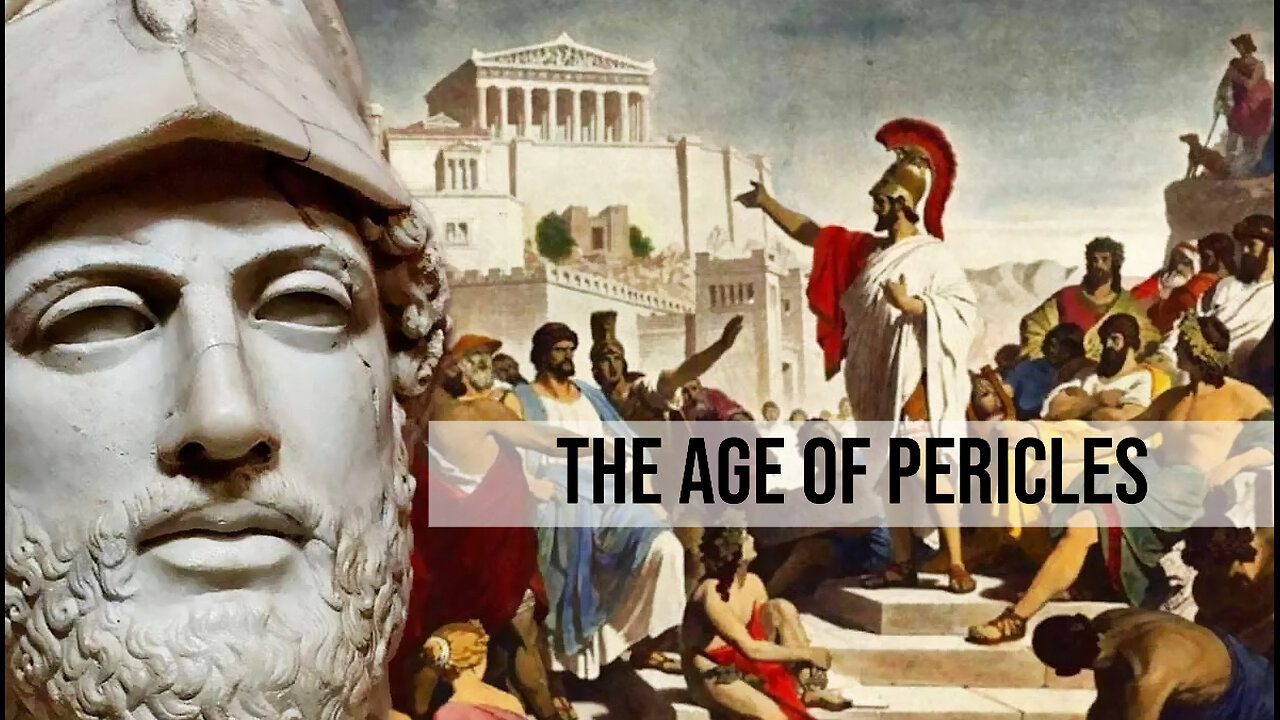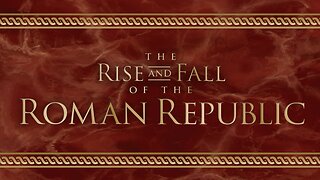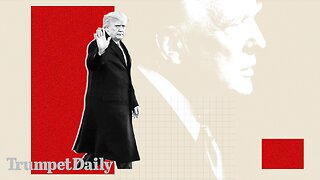Premium Only Content

The Age of Pericles | The Agora - An Ancient Marketplace (Lecture 1)
24 lectures, 30 minutes/lecture
Taught by Jeremy McInerney, Ph.D.
Associate Professor, Department of Classical Studies
University of Pennsylvania
Lecture 2: https://rumble.com/v5e8ntv-the-age-of-pericles-athens-and-the-persian-wars-lecture-2.html
Athens in the 5th century B.C. witnessed a cultural flowering of extraordinary power and importance for Western culture. In this series of 24 lectures, we will use the career of Pericles as the prism through which to examine the achievements of Athens in its golden age. Pericles first appeared on the public stage shortly after the Persian Wars, seminal events that saw the Greeks defeat the numerically superior Persians. In the generation that followed, Athens rapidly transformed the alliance of Greek states dedicated to taking the war back to Persia into an Aegean empire, dominated by the Athenians and their fleet. At the same time, this dramatic increase in power and prestige was accompanied by the growth of full participatory democracy. We examine the daily working of that democracy, asking how an Athenian was trained for citizenship. What did democracy mean in practice? What did freedom and autonomy mean to a society that relied on slaves and was ruthless in its treatment of its subjects?
To answer these questions, we juxtapose the breathtaking accomplishments of the Athenians, in fields such as philosophy, tragedy, comedy, sculpture, and architecture, with the exclusion of women from public life, the torture and abuse of slaves, and the execution of other Greek populations. We will follow the Athenians from the height of their power to defeat at the hands of the Spartans. The picture that emerges is a portrait of a complex people and a complicated culture. Restless, adventurous, sophisticated, crude, pious, the Athenians are a people whose culture has a special significance for us. The ties between us are not casual, but deeply meaningful.
Lecture 1: In the heart of Athens lay the agora, or marketplace. This was the center of the commercial, religious, and political life of Athens. This lecture surveys each of these categories, with special attention to the buildings on the western side of the agora, where the Athenian council met, where the state archive was housed, and where officials entertained state visitors and ambassadors. Laws were put on display in the Royal Stoa, and legal cases were often first investigated by magistrates here. Because the agora was home to moneylenders, traders, and a wide variety of manufacturers, we will also look at the economic activity that took place on a daily basis in downtown Athens at the time of Pericles. In this space, hundreds of stalls were set up, and the range of economic activities taking place suggests that the agora was like a huge bazaar. Sausage-sellers, moneylenders, metalworkers, perfumers, shoemakers, and potters all congregated in parts of the agora. These activities were watched by state officials who ensured that fair weights and measures were used and that grain was sold at fair prices. Finally, we will consider the agora as a religious complex. Within the boundaries of the agora, altars, small sanctuaries, and even temples were dedicated to the various gods who oversaw the welfare of the state. Reconstructions, plans, photographs, and literary descriptions allow us to paint a vivid picture of daily life in the bustling heart of Athens.
Suggested Reading:
Camp, J. M. The Athenian Agora: Excavations in the Heart of Classical Athens. London: Thames and Hudson, 1986.
Thompson, D. B. An Ancient Shopping Center. The Athenian Agora. Princeton: American School of Classical Studies at Athens, 1971.
-
 14:25
14:25
The Great Courses
29 days agoThe Rise And Fall Of The Roman Republic | The Importance of Rome (Lecture 1)
213 -
 20:47
20:47
MTNTOUGH Fitness Lab
21 hours agoDELAYED: Kyrgyzstan Ibex Hunt | A MTNTOUGH Original
25.2K -
 59:50
59:50
Trumpet Daily
20 hours ago $6.04 earnedThe End of the Trans-Atlantic Alliance - Trumpet Daily LIVE | Feb. 17, 2025
21.8K20 -
 52:05
52:05
PMG
12 hours ago $1.54 earnedWhat Does Freedom Cost? Steven Solomon's On-the-Ground Documentary in Ukraine
21.3K -
 2:38:54
2:38:54
TimcastIRL
12 hours agoElon Secret Child Scandal ERUPTS, Ashley St. Clair Story Goes Viral w/Bethany Mandel | Timcast IRL
194K123 -
 2:04:52
2:04:52
Kim Iversen
15 hours agoElon's Pumping Out Babies Like They're Tesla Model 3's | EU Panics Over Peace Talks, Wants More War
183K181 -
 1:05:35
1:05:35
Man in America
17 hours agoFort Knox & Trump’s Secret Gold Move—The Financial Reset NO ONE Is Ready For?
129K134 -
 2:21:20
2:21:20
Robert Gouveia
14 hours agoTrump Goes to SCOTUS! Judge CAVES on DOGE? Fani Willis Not Happy!
134K34 -
 20:41
20:41
Stephen Gardner
14 hours ago🔥You Won't BELIEVE What JUST Happened To Don Trump Jr.!!
145K227 -
 58:00
58:00
The StoneZONE with Roger Stone
12 hours agoEuropean Leaders Resist Trump Peace Overtures To Their Own Demise | The StoneZONE w/ Roger Stone
103K12